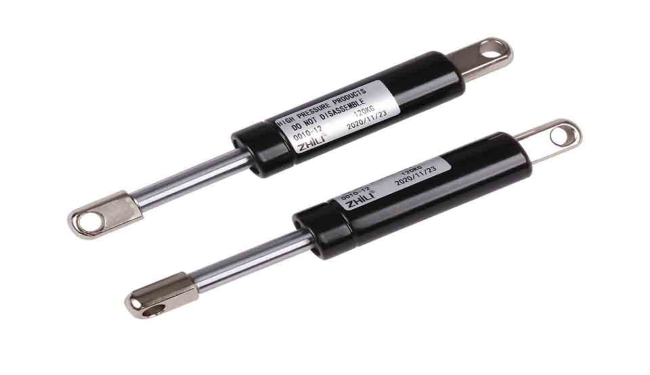If you are interested in our products ,please contact our team
When choosing of gas spring for a specific application, it is not only crucial to have a fundamental understanding of the workings of the gas spring but also the languages used when defining them.
It is necessary to purchase a good quality gas spring from a reputable and trustworthy gas spring manufacturer to truly benefit from its services.
Principally, a gas spring is the same as a mechanical coil spring: a device for storing energy. A gas spring, however, stores energy by compressing the gas contained inside, rather than using straining material that makes up a coil spring.
Once produced and charged with inert nitrogen gas, a gas spring is a closed system that doesn't need any additional gas to function.
The small cross-sectional area of the rod, where the gas is unable to exert any pressure, is the reason why the pressure on either side of the piston remains equal regardless of where it is positioned.
The gas in the spring is compressed when the rod is pushed into the tube, raising the pressure and giving the spring its spring-like characteristic.
To manage the flow of gas when the rod is compressed and stretched, a piston attached to the rod must allow gas to pass through it.
The following terms are frequently used when describing a gas spring:
The distance the rod may cover from its closed length to its extended length.
The length of the gas spring is measured from the centers of one end fitted to the next.
The entire closed length taken between the centers of the first and second end fits. Sometimes end fittings aren't provided, in which case this measurement refers to the distance between the ends of the tubes (excluding threads).
This is the grooved portion. This element keeps the guide and seal package in place and guards against the piston injuring the sealed package during extension.

Stainless steel, carbon steel, or precision-ground steel are all available as rod options. The surface has been treated to promote corrosion resistance and reduce wear. The rod will typically always be shorter than the tube's length and longer than the spring's stroke.
A high-integrity powder-coated, carbon or stainless steel seamless welded tube appropriate for high pressures makes up a gas spring tube. A gas spring's durability and burst pressure performance depend heavily on the internal surface finish and tensile strength of the tube.
The guide and seal package is made of plastic composite and acts as both a bearing surface for the rod and a barrier against contamination and gas leakage.
Plastic, aluminum, or zinc are used in the piston assembly. The integrity of the piston-to-rod attachment is crucial for considerations concerning safety and preventing the rod from being ejected from the spring. The piston assembly regulates how quickly the gas spring expands and contracts.
The end plug, which is attached to the tube end fitting, is used to seal the gas spring's tube end.
Because it is inert and nonflammable, nitrogen is employed inside gas springs because it does not react with any of the interior components
The oil inside a gas spring not only lubricates the piston, piston rod, and seals but also controls the spring's velocity at the end of its extension stroke.
As the spring reaches full extension, the oil serves to slow it down and avoid shock loadings. Without this damping control, the gas spring would rapidly extend under control, which could lead to performance failure, damage, or injury.
Operating temperature, oil viscosity, and oil volume are only a few of the variables that can have an impact on the level of damping.
Metering regulates a gas spring's rate of extension and/or compression. To accomplish this, various manufacturers employ various methods, such as changing the size of the piston orifice or designing constructive flow routes through the piston.
Fundamentally, the goal is the same no matter the technique: to reduce the pressure across the piston and limit the rate of extension.
The pressure drop is reduced, the flow path is less constrained, and the spring extends more quickly the wider the piston orifice or the shorter the flow path.
Even though selecting a high-quality gas spring may not seem like a difficult undertaking, given the variety of options on the market, it is.
Hence the requirement to collaborate with a reliable and trustworthy gas spring manufacturer.
At Dongguan City Zhili Gas Spring Co., Ltd we have an efficient system that boasts of experienced and high-tech professionals.
Our delivery system is efficient and excellent. To deliver your products to you wherever in the world, it can overcome all obstacles. Please check and place your order right away!